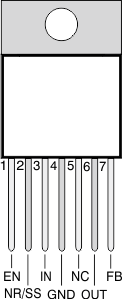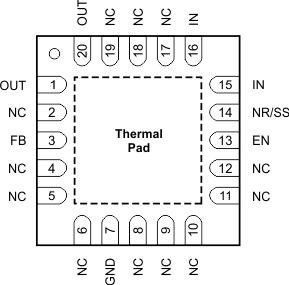SBVS169D December 2011 – April 2015 TPS7A33
PRODUCTION DATA.
- 1 Features
- 2 Applications
- 3 Description
- 4 Revision History
- 5 Pin Configuration and Functions
- 6 Specifications
- 7 Detailed Description
-
8 Application and Implementation
- 8.1
Application Information
- 8.1.1 Adjustable Operation
- 8.1.2 Capacitor Recommendations
- 8.1.3 Input and Output Capacitor Requirements
- 8.1.4 Noise Reduction and Feed-Forward Capacitor Requirements
- 8.1.5 Post DC-DC Converter Filtering
- 8.1.6 Audio Applications
- 8.1.7 Maximum AC Performance
- 8.1.8 Power-Supply Rejection
- 8.1.9 Output Noise
- 8.1.10 Transient Response
- 8.1.11 Power for Precision Analog
- 8.2 Typical Application
- 8.3 Do's and Don’ts
- 8.1
Application Information
- 9 Power Supply Recommendations
- 10Layout
- 11Device and Documentation Support
- 12Mechanical, Packaging, and Orderable Information
Package Options
Mechanical Data (Package|Pins)
- RGW|20
Thermal pad, mechanical data (Package|Pins)
- RGW|20
Orderable Information
5 Pin Configuration and Functions
KC Package
7-Pin TO-220
Top View

